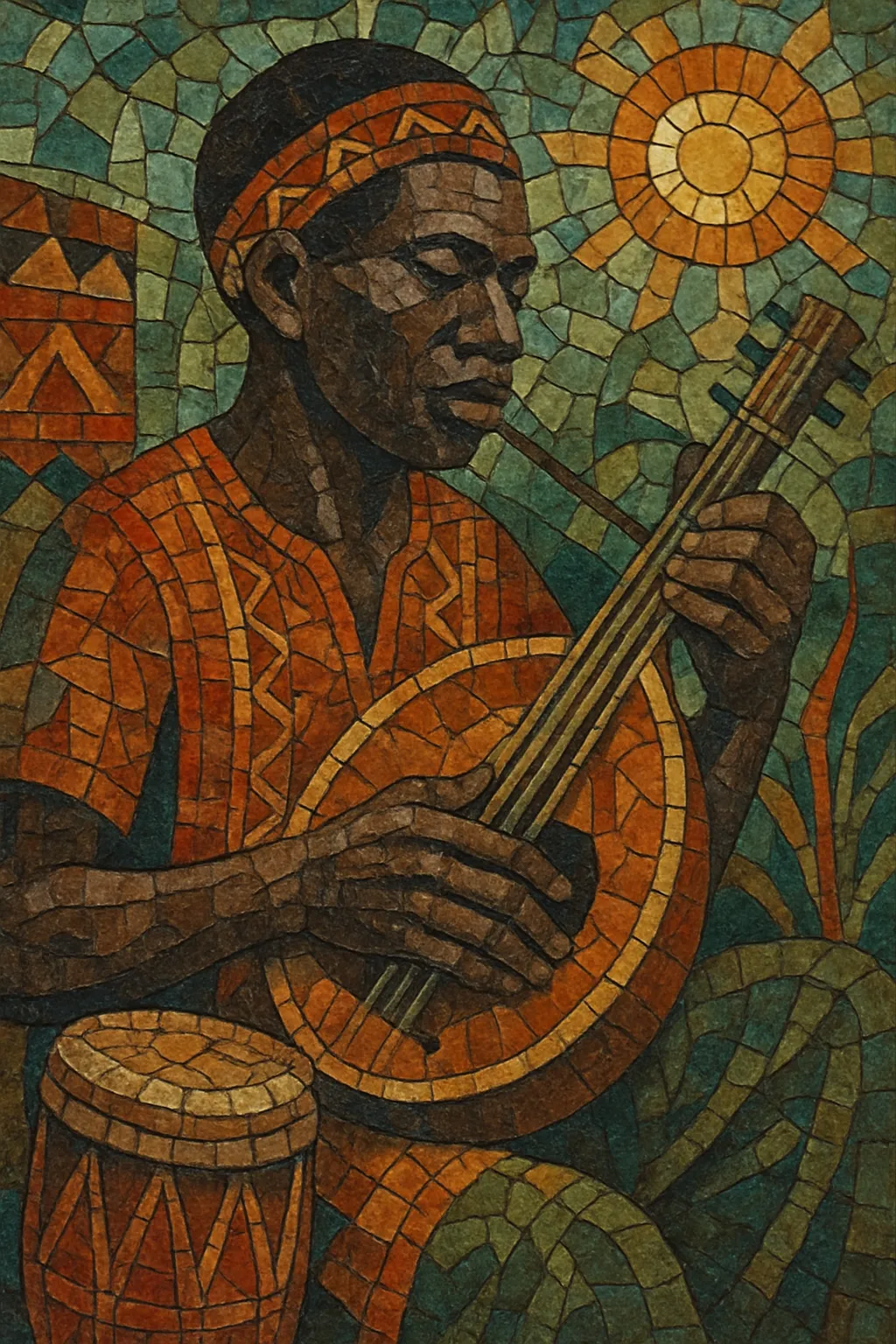Chimurenga is a Zimbabwean popular music style that adapts the cyclical, interlocking melodies and polyrhythms of Shona mbira music to modern band instrumentation. Electric guitars emulate mbira lines, bass holds repetitive ostinatos, and the groove is anchored by hosho (shaker) patterns and a drum kit, creating a trance-like, propulsive feel.
The name means “struggle,” and chimurenga is deeply tied to political and social commentary. Lyrics—often in Shona—use metaphor, proverbs, and call-and-response choruses to address liberation, justice, and everyday life. The sound is modal, often mixolydian or minor, with concise harmonic movement that serves the interlocking textures and dance pulse.
Chimurenga emerged in the 1970s in what was then Rhodesia, led by Thomas Mapfumo. Moving away from Western rock covers, Mapfumo and collaborators recast the interlocking parts of the Shona mbira (kushaura and kutsinhira) onto electric guitars and bass, retaining hosho shaker rhythms and adding drum kit. This created a modern, urban counterpart to rural ritual music, while preserving core cyclical structures.
Because the genre’s name and lyrics referenced the liberation struggle, many chimurenga songs were banned by the Rhodesian regime. The music became a sonic emblem of resistance, carried by coded language, proverbial imagery, and community choruses that allowed political meaning to travel in plain sight.
After Zimbabwe’s independence in 1980, chimurenga expanded in scope and audience. Bands incorporated more horns, keyboards, and occasional reggae/dub production touches while maintaining mbira-derived guitar lines. The music continued to critique social issues; Mapfumo’s later critiques of corruption led to friction with authorities and eventual exile, even as the music’s stature grew internationally.
In the 2000s, chimurenga reached global “world music” circuits, inspiring cross-cultural collaborations and studio approaches that paired live mbira with electric ensembles. The genre directly shaped Zimbabwean guitar traditions and informed jit and sungura’s kinetic picking styles. Today, chimurenga remains a living idiom—politically conscious, danceable, and rooted in Shona musical logic—sustained by both veterans and new generations.


